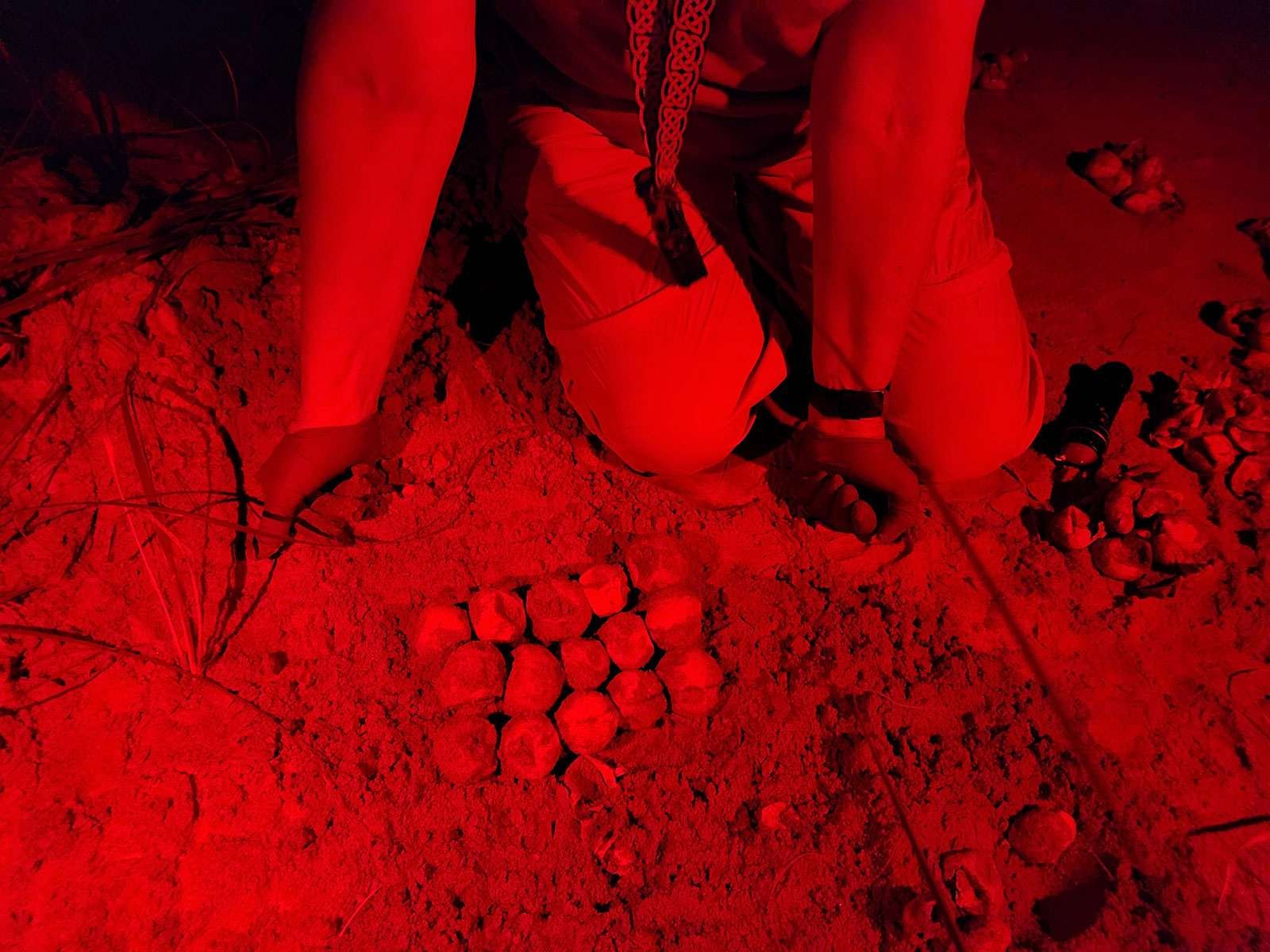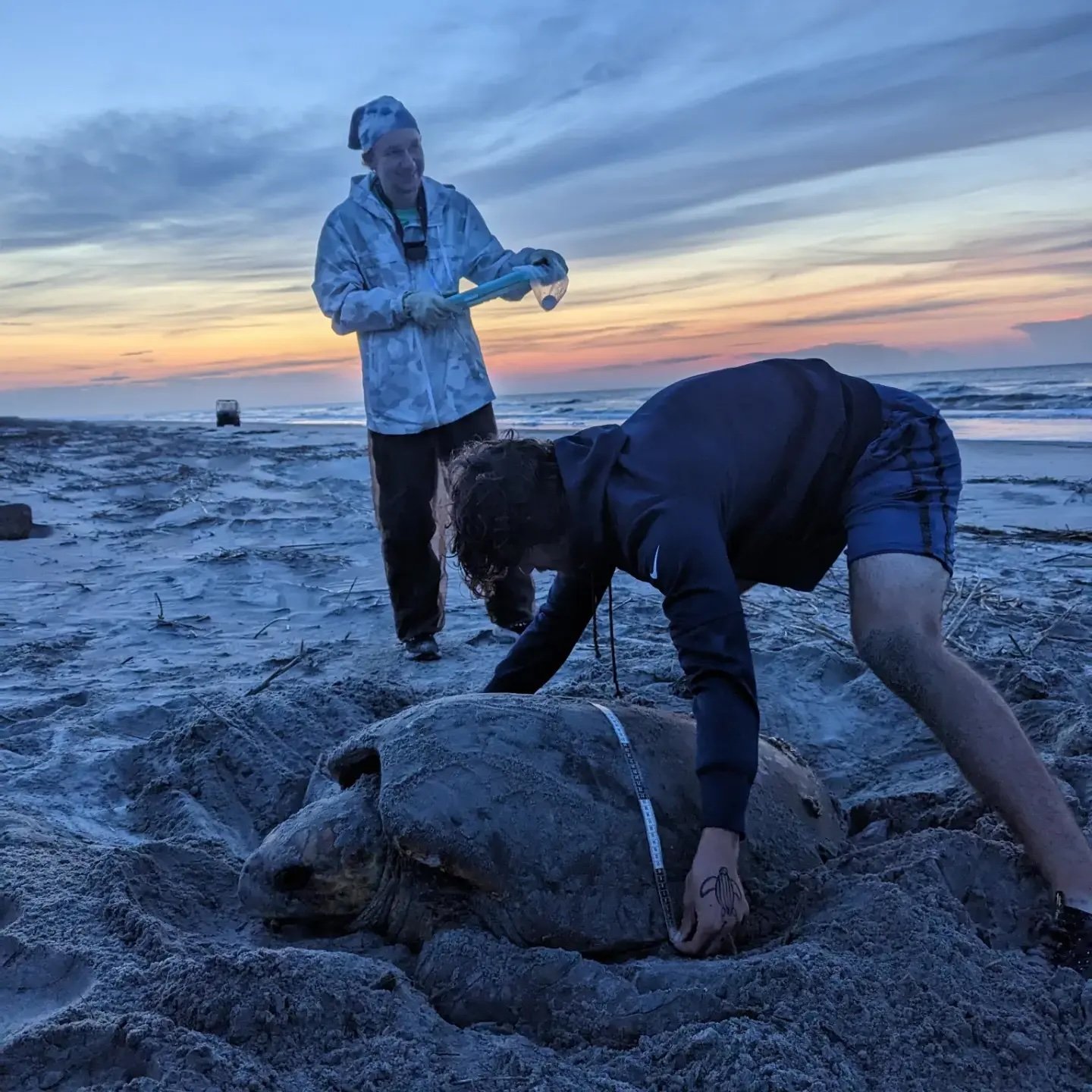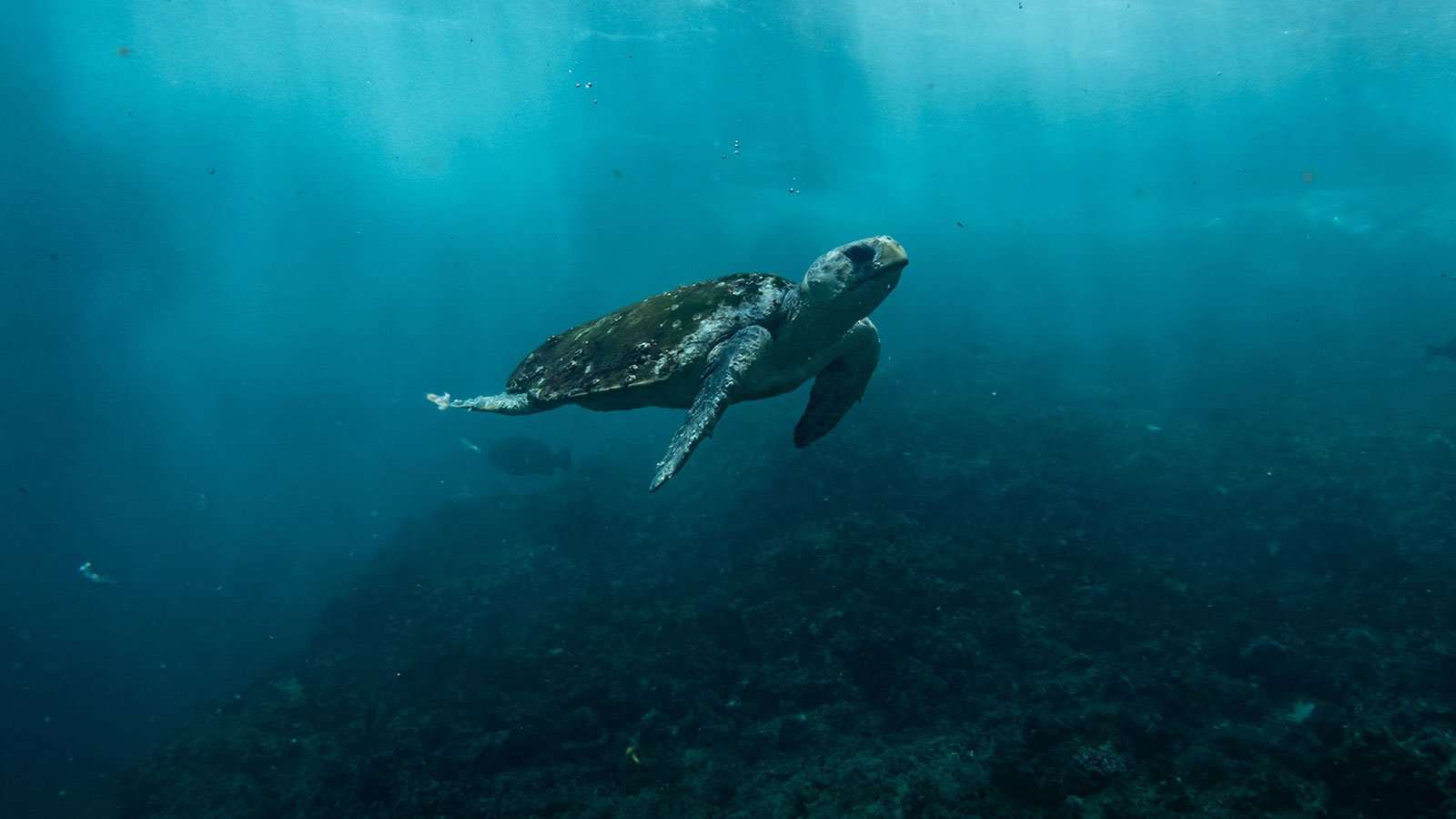This coverage is made possible through a partnership between Grist and WABE, Atlanta’s NPR station.
In the middle of a steamy July night on the Wassaw Island beach, near Savannah, Georgia, volunteer Gabi Steinbach plunged her arm shoulder-deep in the sand to reach a loggerhead sea turtle nest that hatched five days before. She pulled out the remaining eggshells, and fellow volunteer Sheri Pittman sorted and counted them by the light of the moon and a red-tinted headlamp. Some fragments are too small to count, but Pittman uses the larger pieces to determine how many hatchlings made it out of this nest.
“Any eggshell that is over 50 percent counts as a hatched egg,” explained Kristen Zemaitis, who directed a team of volunteers with the Caretta Research Project. The team also investigated the unhatched eggs for signs of development. “Then we will categorize that by different stages to see the percentage of development in each egg.”
All that information tells the story of this nest, one that the Caretta team has been following for about two months since an adult turtle crawled up on the beach, dug a hole with her flippers, and laid these eggs. Whenever possible, these volunteer teams catalog the nesting mother as well, taking measurements and recording her tag number if she has one.
It’s an all-night, all-summer effort.

The Wassaw Island data makes up part of a vast mosaic of information collected by volunteers along all of Georgia’s 100 mile coastline, as well as the coasts of Florida, the Carolinas, and Virginia. Patrolling the beaches overnight or at dawn, they inventory thousands of sea turtle nests each year. Volunteers amass reams of data about nest locations, the number of hatchlings, the nest success rates, the details of the mother, and more.
The data-gathering effort began in the 1960s on just a couple of Georgia’s barrier islands. That led to successful attempts in the late 1980s and early 1990s to protect sea turtle adults from shrimping nets and nests from human interference.
All this work has allowed scientists to gain deep insight into the sea turtle population over time, tracking their long decline and the extraordinary resurgence of the hatchlings who were protected in the 80s and 90s and finally returned to nest in the last decade. It’s also helping researchers, armed with new technology, to monitor how turtles respond to the new threats posed by rising seas and temperatures. But it’s long, slow work — and much of today’s research likely won’t bear fruit for decades.
Like many turtles, loggerhead sea turtles’ sex depends on the incubation temperature of their nests — warmer incubation produces females. So as climate change progresses, there could be far more females than males. Exactly how problematic that will be for the sea turtles is difficult to predict, Zemaitis said.
Sea turtle reproduction is a numbers game: The turtles lay lots of eggs in lots of nests to increase the odds that some of their babies will survive the numerous threats stacked against them. The turtles mate out in the ocean, then the females lay six to eight nests in a season, roughly two weeks apart. Scientists know from DNA testing that the females often mate with multiple males, but they can also store sperm so they don’t have to find a male to mate with every time they lay a nest.
That means having fewer males than females won’t necessarily keep the females from nesting — but it could hurt the turtles’ genetic diversity.
“A population ecologist would tell you, you only need a couple males to populate, you know, as many females as they can get with, essentially,” said Zemaitis. “With fewer and fewer males, that just lowers the gene pool over the years. We don’t know what effect that will have.”
To help track the impacts, Caretta Research Project teams have been using thermometers inside sea turtle nests since around 2000.
They’re also part of a broader effort to track sea turtle DNA. University of Georgia researcher Brian Shamblin has been leading that work since 2008, and his project now collects DNA samples from turtle nests all along the coast from North Florida to the North Carolina-Virginia border. They know far more about the females since researchers can take samples from the mothers while they lay their eggs and from each nest, but Shamblin and his team are now working to get more genetic information about male sea turtles so they can better follow the shifting population.
But sea turtles take around 30 years to reach sexual maturity. Hatchlings that crawl to the ocean today won’t be back until the 2050s. Although researchers can’t draw conclusions from their current data, it will be critical decades from now.
“It’s important to collect the data now and we can look back 30 years and say, well, this is the temperature that they were incubating at, this is probably why we’re seeing this number of males,” said Zemaitis.
The same difficulty — having to move on turtle time — haunts research into the other major threat that climate change poses for sea turtles. Rising seas are eroding the beaches the turtles nest on, and could eventually render some historic nesting beaches unusable for the turtles.
“If we’re worried about climate change, we’re worried about sea level rise,” explained Shamblin. “How much wiggle room do we have in here for these females to choose new beaches to colonize?”
That’s a major focus of his work on turtle DNA. Although the Wassaw team patrols at night and can identify the turtles as they lay their nests, a lot of the data collection elsewhere happens in the morning after the mothers are gone. Shamblin uses DNA samples taken from each nest to match them with the turtles who laid them.
Conventional wisdom has long maintained that the turtles return to the beach where they hatched to lay their nests, but the reality is often less precise. Shamblin and his team use the DNA matching to track just how flexible the turtles are about where they nest.
So far, the answer is mixed. Some individual turtles stop at multiple beaches across different states in a single season, while others stick resolutely to the same stretch of sand. Some of the strongest site fidelity — meaning the same turtles consistently nest in the same spot — is on two islands in Cape Romain National Wildlife Refuge, near Charleston, South Carolina. That’s cause for concern, Shamblin said.
“About 25 percent of all loggerhead turtle nests north of Florida are on those two islands,” he said. “So it’s a really high density nesting area. Those also happen to be two of the most erosional islands in the state of South Carolina.”
But there’s cause for hope, too, because some turtles do try multiple beaches, especially younger ones nesting for the first time. That means the population could gradually shift away from disappearing beaches as sea levels continue to rise. In Georgia, many of the beaches are less developed than in neighboring states, and they naturally share sand with one another, so it could become a destination for sea turtles as other beaches vanish — provided the turtles are flexible.
But, again, scientists won’t be certain for decades, which makes sea turtle conservation different from other challenges, said Mark Dodd, who leads the sea turtle conservation program for the Georgia Department of Natural Resources and has studied Georgia’s turtles for decades.
“We’re used to kind of working on a problem and fixing it in two or three years, feeling good about yourself, and moving on to the next thing,” he said. “With sea turtles it’s a long-term commitment. It’s one that, you know, it’s probably not going to be completely done in the course of my whole career.”

Even without the uncertainties of climate change, sea turtle hatchlings face long odds to survive. After a long night digging up several successful nests, the volunteers on Wassaw found one nest where no hatchlings made it out — possibly trapped by heavy rainfall compacting the sand, just one of the many natural hazards they face.
But in another nest, they found a straggler — a tiny, living sea turtle who didn’t make it out with its nestmates. As morning began to dawn over the ocean, Zemaitis set it down on the sand.
“We’re just gonna give him a little space to stretch his legs, stretch his flippers, get warmed up for the big trek to the ocean,” she said.
The hatchling, just an inch and a half long, used its teensy flippers to drag its way bit by bit across the beach toward the water. The first waves buffeted the hatchling about as they broke over its head. But eventually, to cheers from the watching volunteers and researchers, the turtle took to swimming. If it survives the predators and other dangers out in the wide ocean, this sea turtle could be back in 30 years to breed — even if it finds a coastline radically altered by climate change.
This story was originally published by Grist with the headline Tracking sea turtles is a long, slow process that just might keep them alive on Aug 11, 2025.















